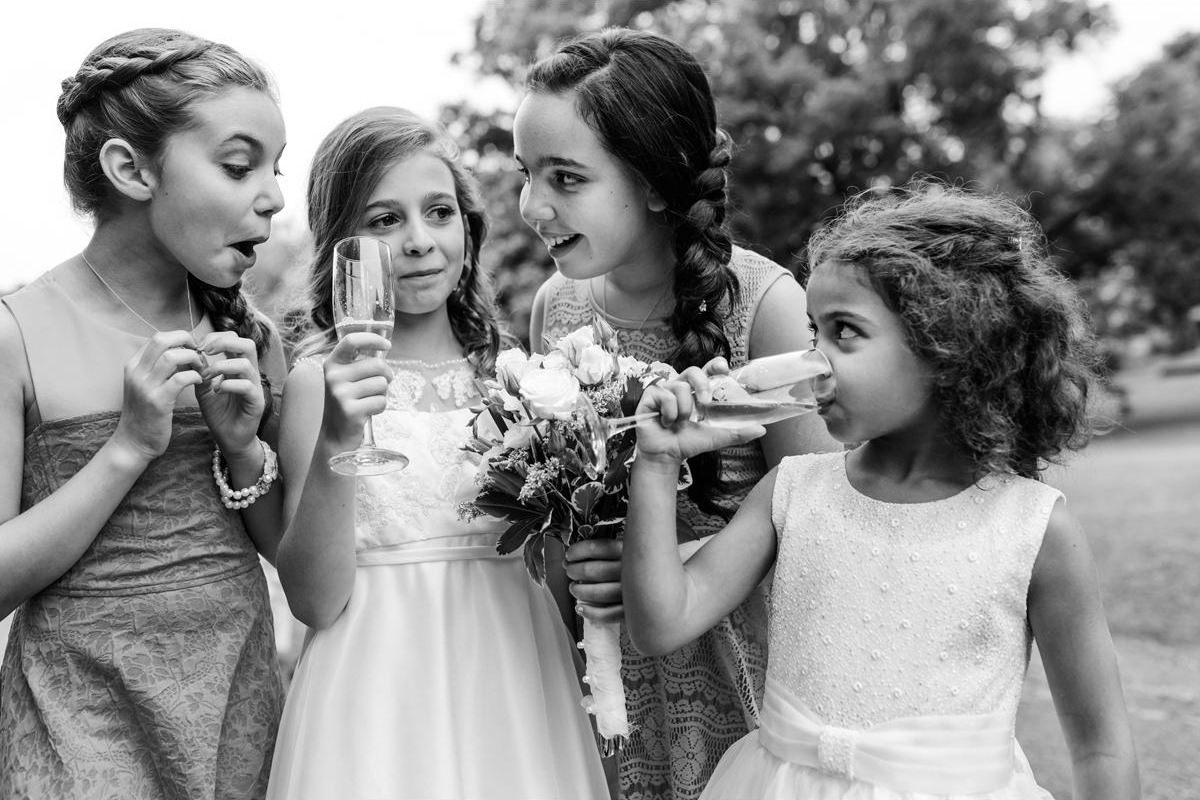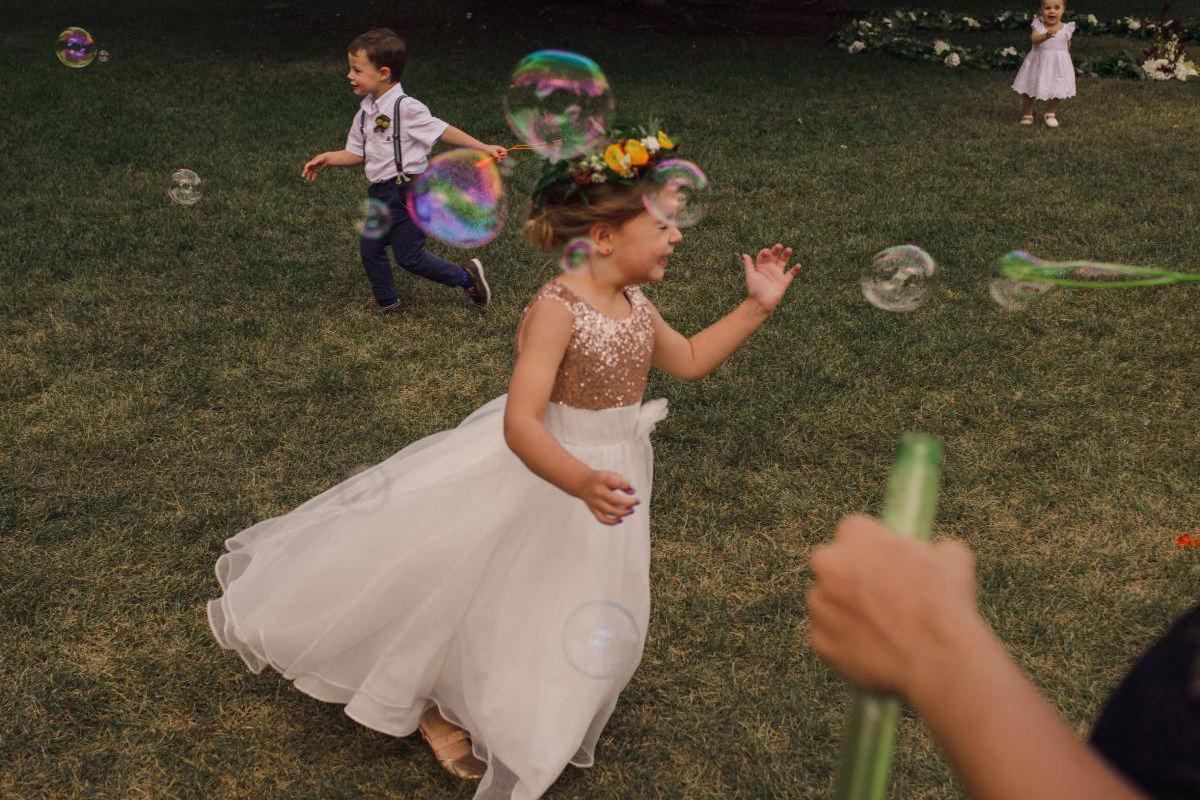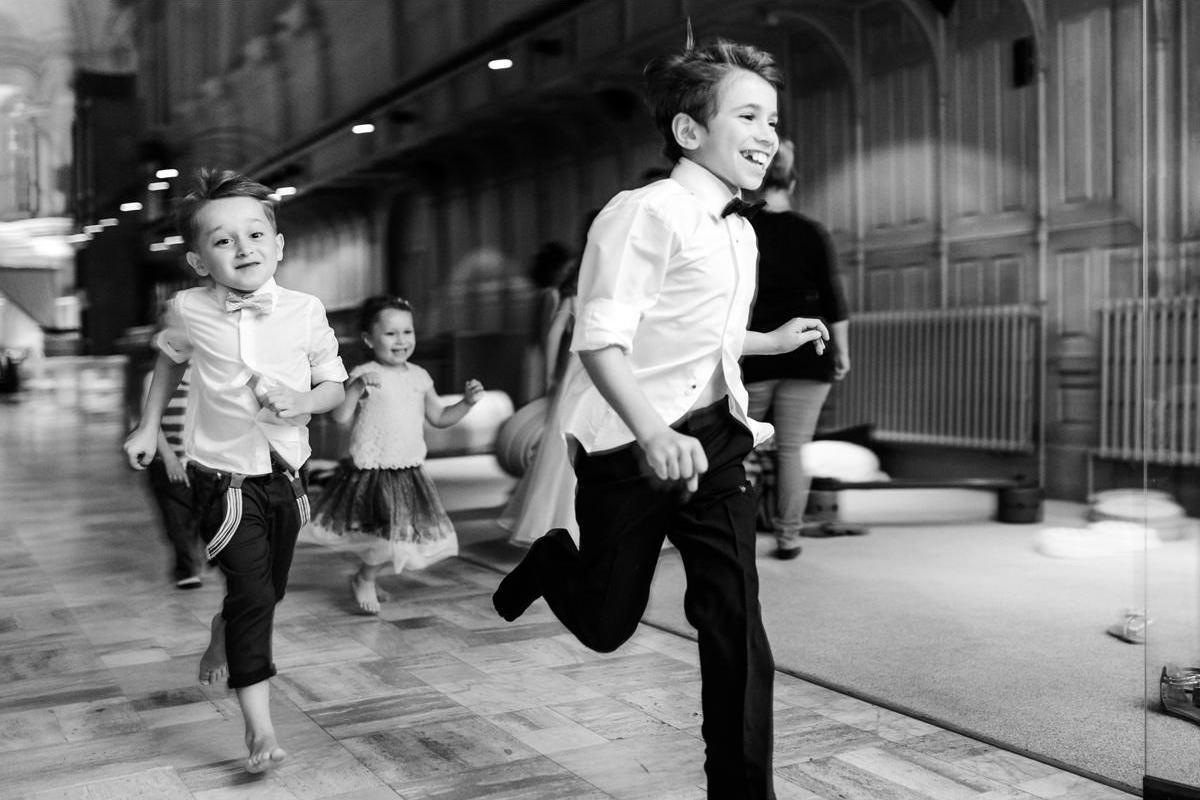They may steal the show, but kids have always had a role in weddings—symbolizing purity, legacy, and the future of the family.
From flower girls to ring bearers, children bring sweetness, spontaneity, and symbolism to wedding ceremonies. But these roles aren’t just about cuteness. Throughout history, children have played important—and often highly symbolic—parts in marriage rituals across cultures.
Whether included for tradition, personal meaning, or joyful chaos, children remain an enduring part of many Canadian weddings. Here’s how their roles began—and how they’re evolving today.

Ancient and Medieval Roots: Pages, Petals, and Processions
Page Boys and Miniature Nobility
In medieval Europe, page boys were young male attendants—often from noble families—who served lords and knights.
- At weddings, page boys might carry the bride’s train or present ceremonial items.
- Their presence reflected family alliances and social rank.
- Dressed in miniature versions of adult finery, they signaled the continuity of lineage.
Flower Girls and Fertility Symbolism
The flower girl has ancient origins, tied to themes of fertility, purity, and prosperity.
- In Roman and Greek weddings, young girls would scatter wheat or herbs to bless the couple with abundance.
- Over time, this evolved into tossing petals, lavender, or grains along the wedding path.
- The flower girl came to symbolize innocence, new beginnings, and the hope of future children.
Victorian Sentimentality: Childhood Idealized
By the 19th century, the inclusion of children in weddings reflected a broader cultural shift toward idealizing childhood:
- Weddings became more romanticized, and children represented purity and familial love.
- Flower girls and ring bearers became popular in upper-class ceremonies—especially those emulating royal weddings.
- Their outfits often mirrored the bride and groom, emphasizing their symbolic roles.
This is when wedding photography also began to include staged portraits featuring the full wedding party, children included.
20th Century Traditions: Formalized Roles Take Hold
Throughout the 20th century, the roles of children became standardized in Western weddings:
- Ring bearers (usually boys) were given the task of carrying the rings—though often on symbolic pillows or boxes.
- Flower girls (usually girls) walked ahead of the bride, scattering petals or carrying floral baskets.
- In some cultures, children also served as banner holders, train carriers, or attendants for religious rituals.
While primarily symbolic, these roles reinforced traditional gender roles—though many couples today are moving beyond that.

Modern Canadian Weddings: Inclusive and Flexible
In today’s diverse wedding landscape, children’s roles are evolving with intention:
- Couples now invite children of any gender to serve as ring bearers, petal throwers, or sign holders.
- Families with children from previous relationships may include them in blended family ceremonies, vow readings, or even officiant roles.
- Queer, intercultural, and non-traditional weddings often include children in ways that reflect broader family structures.
Some couples even skip formal titles, inviting kids to “help” in small ways that make them feel important.
Cultural and Religious Roles for Children
Different cultures incorporate children in wedding ceremonies in meaningful ways:
- Jewish weddings may include children in the chuppah procession.
- Hindu weddings sometimes include nieces or nephews assisting in rituals or blessing the couple.
- In Filipino weddings, coin, cord, and veil sponsors are often assigned to young relatives.
- Indigenous weddings may include children in drumming, smudging, or ceremonial gifting.
In multicultural Canadian weddings, these traditions are often blended or reinterpreted.
Children Through a Photographer’s Lens
Kids at weddings bring unpredictable charm—and unforgettable photo opportunities:
- Flower girls sneaking cake, ring bearers mid-tantrum, proud older siblings helping dress the bride
- Candid moments that break the formality of the day with joy, humour, or tenderness
- Sweet portraits of multi-generational families, capturing legacy in real time
Photographers often anticipate these moments as highlights—not side notes.

Related Reading in the History of Weddings Series:
- The History of the Wedding Party
- The History of Bridesmaids and Groomsmen
- The History of the Wedding Ceremony
- Wedding Traditions from Around the World
Continue Planning Your Wedding
Ready to dive into the details? How to Find the Perfect Wedding Photographer: The Ultimate Guide to Making the Right Choice